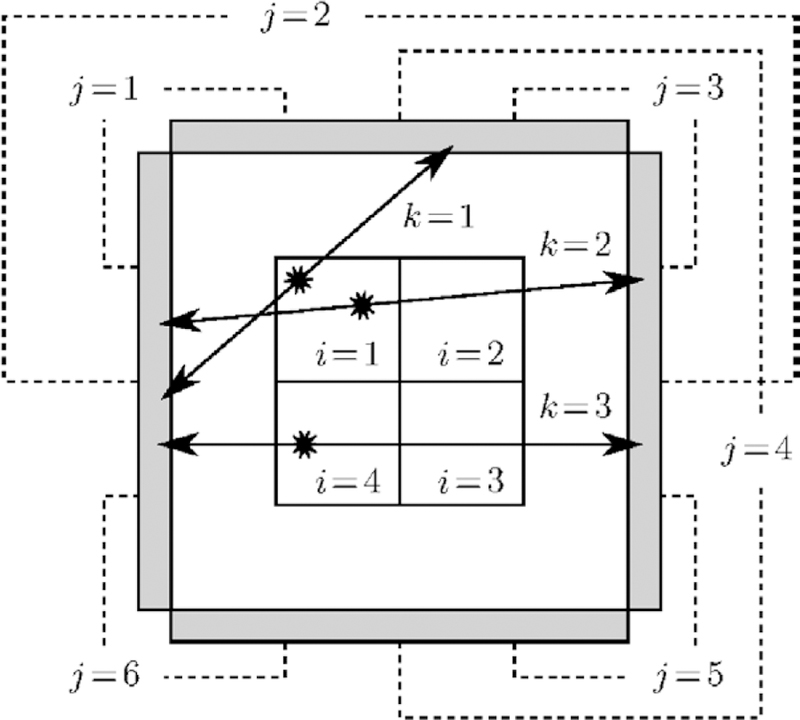Figure 2.

Four-detector, four-voxel PET system (schematic drawing). Three events k = 1, 2, 3 are detected during data acquisition, yielding incomplete data Perfect collinearity of annihilation photons is assumed, hence α15 = α26 = α31 = α43 = 0. Consequently, there are 48 possible OEs, and 24 sets of potential complete data. For example, the actual, unobservable emission counts n = {n11 = 1, n12 = 1, n13 = ··· = n41 = 0, n42 = 1, n43 = ··· = n46 = 0} are represented by the OEs ω1 = {(1, 1), (1, 2), (4, 2)} and ω2 = {(1, 1), (4, 2), (1, 2)}.
